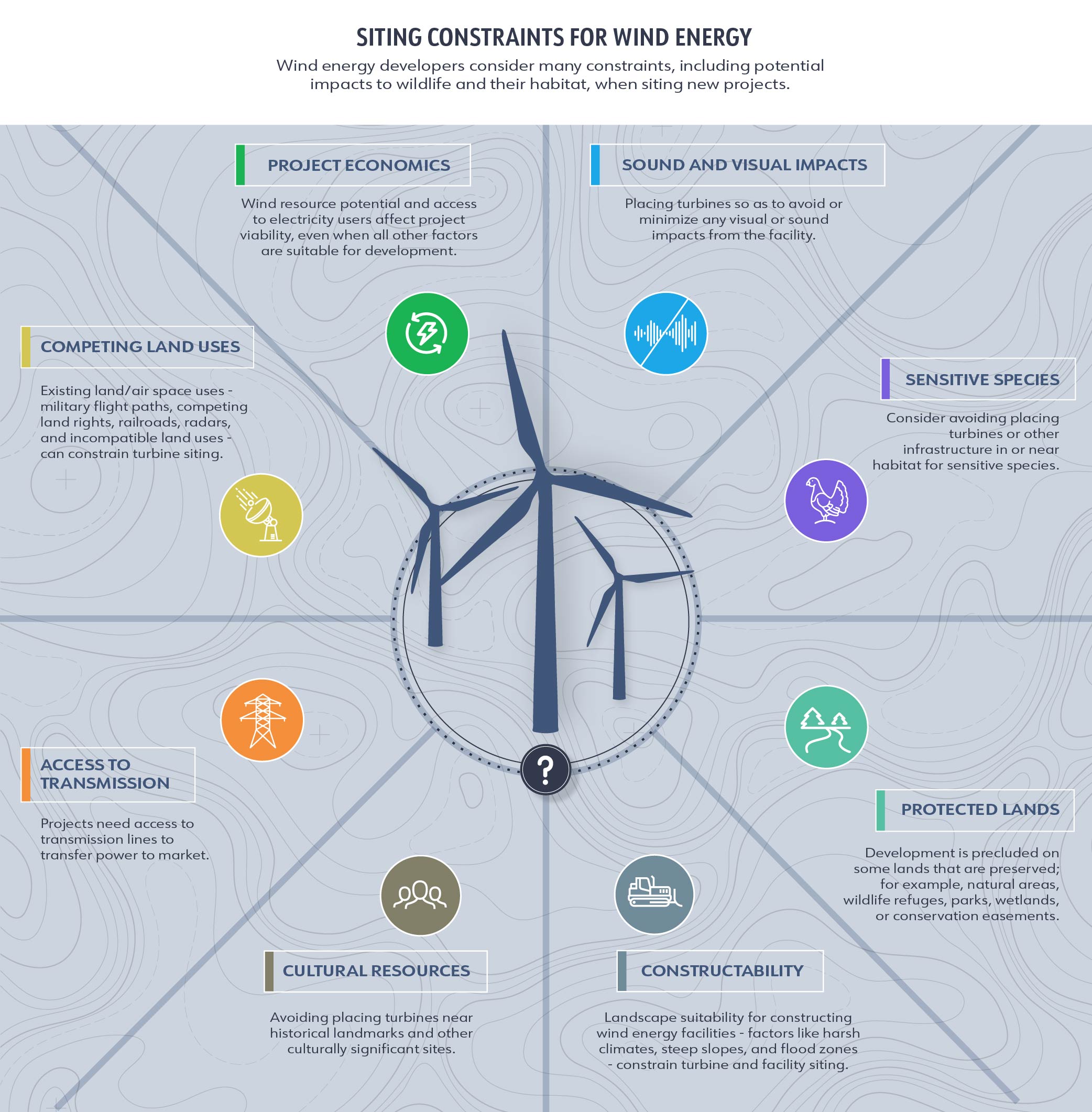03
Landscape Assessment and Siting Practices to Address Risk to Wildlife and Habitat
There are many constraints wind energy developers must consider when siting a new wind project, including several factors unrelated to wildlife that limit the area where a wind facility can be built. For wildlife considerations, the first and in some cases the best opportunities to avoid and minimize impacts occur during the earliest stages of wind energy project siting: screening prospective project sites and documenting potential wildlife and habitat impacts. Knowledge of where and how wildlife use proposed site, can help developers avoid high-risk areas. Pre-construction surveys inform project design– the micro-siting of turbines and other infrastructure – to avoid placing turbines in areas that might otherwise increase collision rates or habitat-based impacts from a project. These surveys also inform the need for post-construction fatality monitoring and can provide a baseline for post-construction studies to evaluate changes in habitat use from project construction and operation which can inform adaptive management. Landscape assessment and siting are key to avoiding or minimizing habitat-based impacts.
Landscape-Level and Site Screening Studies
Existing maps and databases can be used during the site prospecting phase to identify potential areas of high sensitivity, including migratory pathways, large blocks of intact landscapes or ecological resources, or habitat used by fragmentation-sensitive species. Once the focus has narrowed, potential project sites can be characterized to determine the presence of protected or threatened species and critical habitat. Site screening may provide sufficient evidence to either proceed without further study if there is low probability of adverse impacts, proceed with on-the-ground assessments where more information is needed, or abandon the site in question if there is a high probability of major adverse impacts that cannot be mitigated sufficiently.
Documenting Wildlife and Habitat at a Site
In most cases, site screening raises issues or questions that require more detailed field studies to document the presence, relative abundance, and behavior of species of concern and to quantify potential project impacts. These field studies serve three purposes: (1) to determine whether to proceed with project development; (2) to identify measures that might be taken to avoid or minimize adverse impacts; and (3) to determine whether post-construction monitoring may be warranted, and if warranted, to develop the pre-construction studies needed to establish a baseline for post-construction evaluation of impacts.
Siting to Reduce Risk
Improving our understanding of risk factors can inform whether and how project siting can help minimize collision and habitat-based impacts for certain species. The placement of turbines during project design offers opportunities to site individual turbines away from landscape features with higher bird and bat activity, thus reducing collision risk. Siting wind energy facilities on land that has already been transformed by human activity and avoiding landscapes that offer high-quality habitat for species of concern may help avoid or minimize adverse habitat-based impacts, keeping in mind that some agricultural landscapes and restored brownfields can be important habitat for grassland birds.
